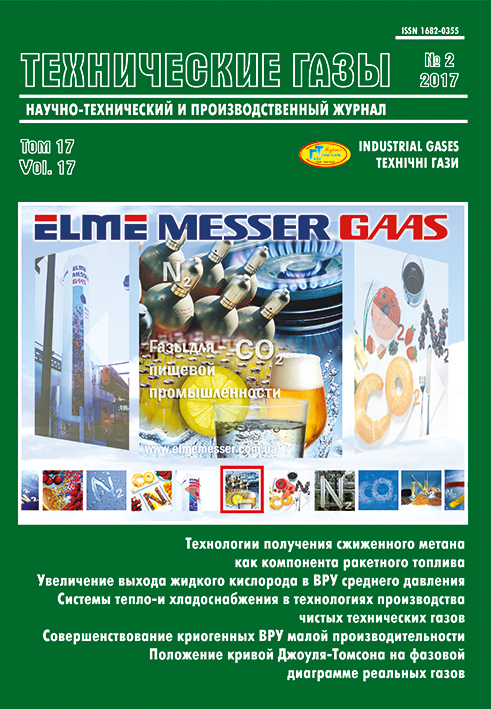IMPROVEMENT OF CRYOGENIC AIR SEPARATION PLANTS OF LOW CAPACITY
DOI:
https://doi.org/10.18198/j.ind.gases.2017.0862Keywords:
Air separation plant, The Stirling cycle, Oxygen, Nitrogen, Rectification, Gas cryogenic machine, Pressure swing adsorption (PSA), Air separation PSA-unit, Membrane air separation unitAbstract
A comparative analysis of cryogenic and non-cryogenic air separation methods has been carried out. It is shown that the main advantage of membrane and adsorption air separation plants (ASPs) is their relatively low cost and, consequently, a short payback period. Despite significant progress in improving adsorption and membrane ASPs achieved in the last decade, cryogenic air separation plants remain unsurpassed in a number of parameters. To increase the competitiveness of cryogenic ASPs of low capacity, it is necessary to radically reduce their cost. This can be achieved by using gas cryogenic machines to compensate for cold losses in cryogenic ASPs. They do not have the most expensive elements of the Claude-cycle units: medium pressure compressor and expander. We conducted simulation of an air separation plant in the stream simulator «SOSO / ChemSep» for obtaining oxygen at a pressure of 16 MPa, using a gas cryogenic machine operating on the Stirling cycle. Energy consumption to produce one nm3 of production oxygen in such a facility is 1,2 kWh. To obtain one kilogram of liquid nitrogen, 1,32 kWh of electric power is consumed.
Downloads
Issue
Section
License
LICENSE AGREEMENT
After receiving an article for publication as required revision scientometric databases each author directs the license agreement on the assignment and transfer of the management of copyright. Signatures of the author (s) it is desirable to seal the personnel department of the institution where the author works (authors), or the seal of the Faculty.
Revision refers to the authors one layout for proofreading. Permissible only those fixes that result in compliance with the layout of the original text of the article. Significant changes are not permitted. Layout should be sent to the editorial office within days of receipt.

